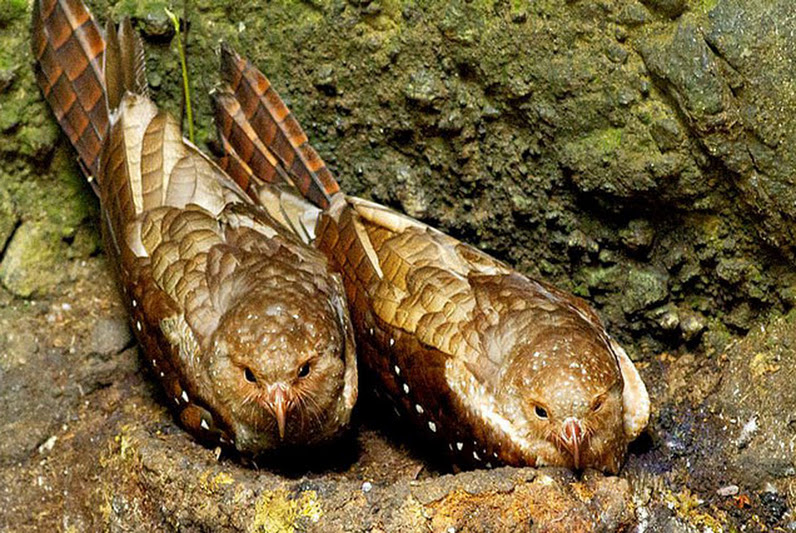
Local Birder Puzzled by an Oilbird in Cusco
An Oilbird (Steatornis caripensis) was seen and photographed perched on a utility wire on a street in the city of Cusco. Juan Cardenas who is a local birder, made this rare discovery. This vagrant Oilbird was in plain view, and to judge from the photo above, it looked cold and in poor conditions.
Vagrancy is a phenomenon whereby individual animals appear well outside their normal range; individual animals that exhibit vagrancy are known as vagrants. The term accidental is sometimes also used among birdwatchers. There are a number of factors that might cause an individual to become a vagrant, genetic factors and weather conditions are two, but the causes are overall poorly understood. Vagrancy can be a precursor to colonization if individuals survive.

Vagrancy appears to be more common in young adult birds (possibly inexperienced individuals) of many species. Some birds, instead of heading to their usual wintering grounds, take “incorrect” courses and migrate through areas that are not on their normal migration path. The Oilbird is not regarded as a migratory species. They are largely frugivores, which are known to undertake altitudinal and latitudinal migrations in search of a resource as ephemeral as fruit. The Oilbird in cusco might have been a young bird that got disoriented as it was moving in search of food.
How unusual is an oilbird in Cusco?
Compared to extreme vagrant birds that show up on a different continent, the distance between the Oilbird’s range and where it was found are relatively short. There is about 50 miles between the warm rainforest of the eastern side of the Peruvian Andes between 500–2200 meters of altitude (the species’ normal range). Cusco is located at 3,500 m above sea level, is largely a treeless ecosystems lacking food for an Oilbird, and very cold as temperatures drop to near freezing at night. A strayed and probably weakened bird without food and cold temperatures may have resulted in the condition the bird was found. Juan Cardenas commented that the bird flew upon being harassed, but was unable of sustained flight and fell to the ground where it was captured and taken to a rehab center.